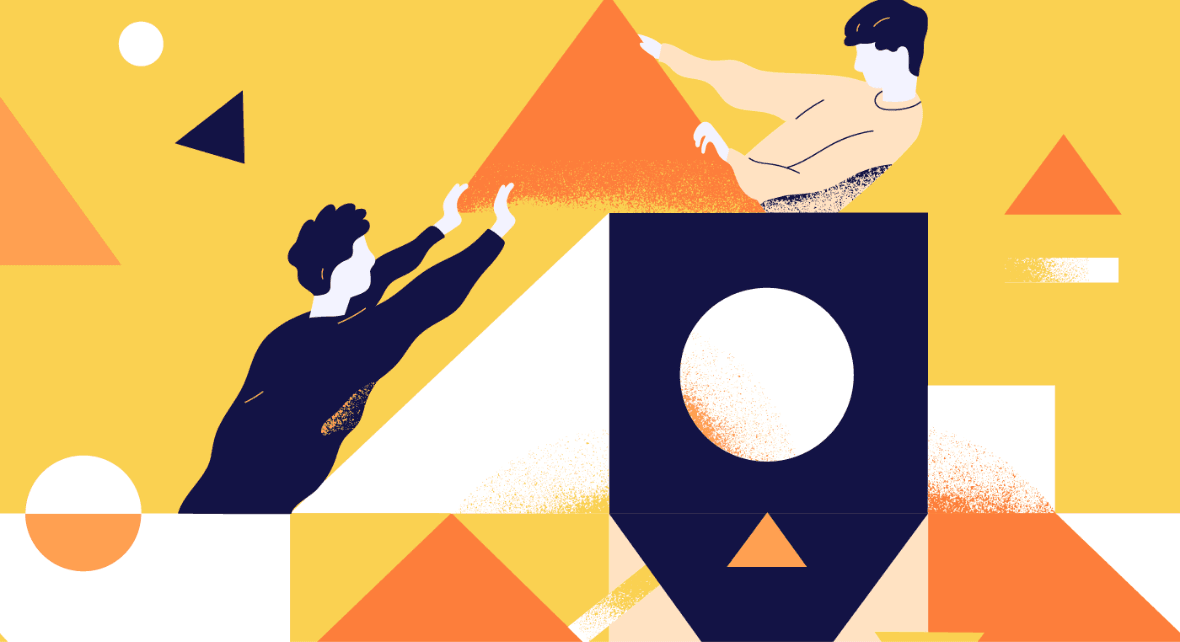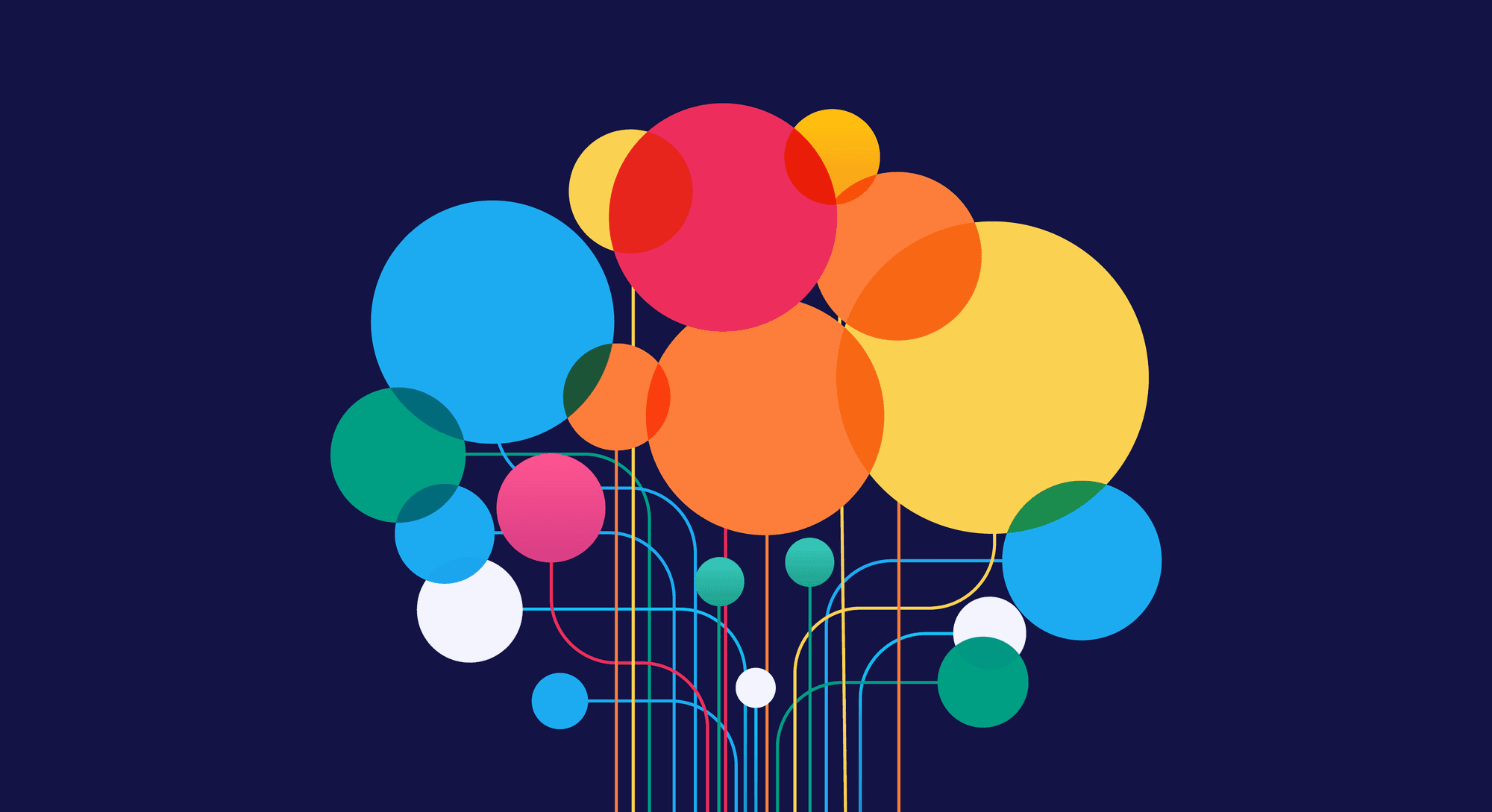Product Discovery is an important process within product development. From this process, we can identify users' needs and even possible solutions for them.
Keep reading and learn how to implement a Product Discovery process in your UX Design projects.
What is Product Discovery and why is it important?
We can draw the product development process as follows:
- Understanding the problem;
- Choosing and refining solutions;
- Product development.
We've summarized these steps, but its foundation is related to processes like the Double Diamond. If you want to learn more about this process, check the article:
Product Discovery regards the first steps listed above: understanding the problem and choosing and refining solutions.
This way, the goal of Product Discovery is to understand the users so we can identify their needs and develop better solutions for them.
The main focus is gathering data, validating or invalidating assumptions, and "discovering" a need that can be solved and will be essential for users.
Therefore, Product Discovery is crucial because it helps develop products that become indispensable to people's routines.
It is about mitigating risks

One thing to remember is that Product Discovery is about mitigating risks.
Product Development demands a lot of decision-making. Any rash decision based on wrong assumptions can harm the entire project.
In this sense, the better you know about users, their needs, the market, and the competitors, the fewer risks you'll take.
These analyses and studies help us avoid risks related to:
- Product Value: will users see value and utility in our products?
- Usability: will users know how to interact with the interface?
- Development: is there any constraint in developing the product?
- Business: will the product bring value to the company and help it achieve its goals?
Product Discovery will help the design team answer these questions and minimize risks so you can develop better solutions for your users.
When should you make a Product Discovery?
In general, the Discovery phase will always help support decisions around product development. This is extremely important for iterative processes, where the product is never really finished but in constant improvement.
However, there are specific situations where Product Discovery is also indispensable, such as:
Business growth: when a company wants to launch a product in another country or region. In this situation, Product Discovery helps gather data about the market, competitors, users, company's strengths and weaknesses.
New product development: this situation is a classic example of using the Discovery phase to understand the opportunities your product will cover.
Merge and acquisitions: when two companies become one, Product Discovery helps unify both portfolios, understanding how products solve the users' needs.
Who is on the Product Discovery Team?

When we talk about UX Design teams, it is important to highlight the importance of multidisciplinarity.
A multidisciplinary team provides different perspectives, experiences, and opinions that will result in a richer product development process.
The team configuration we are about to list is not a rule but a way to cover different approaches in the Product Discovery process. So let's consider the following structure:
Stakeholders: they are the interested parties of a project, such as employees, directors, shareholders, regulators, and customers. A stakeholder is concerned about the success and operations of a company. Usually, stakeholders approve ideas and control the budget.
Developers: responsible for turning ideas into code and making the product functional for users. At the same time, they evaluate if those ideas are viable or not.
Business Analyst: they study and analyze the market and represent the company's interests. This way, they ensure that product and company objectives are on the same page.
Project Manager: responsible for managing all the processes within the project, including activities plan, budget control, deadlines, etc.
Designers: they work on the user experience, considering the product's usability.
UX Researchers: they run surveys and interviews and collect all kinds of data that support the understanding of the users, their problems, and their needs. This information is crucial to help develop better products and solutions.
All members should actively participate in meetings and workshops. This way, the team can benefit from a multidisciplinary approach and learn from everyone's different opinions, expertise, and points of view.
Reading tip: Product Manager – Business, Technology, and User Experience
The 5 principles of Product Discovery

Some principles will help your team make a difference in the Product Discovery process:
- Always focus on the users;
- Do not rush;
- Failing is good;
- Be scientific;
- Product Discovery never ends.
1) Always focus on the user
This principle stands for all activities that involve UX Design. Over time, the knowledge and experiences we acquire at work help shape our opinions and perspectives.
But developing products that will solve peoples' problems requires putting the user at the center of the decision-making process.
So remember that biases can harm a user-centered approach. This way, don't let personal opinions get in the way of a product development process. Instead, constantly research your users and run surveys to help support design decisions.
Always keep in mind that UX is about User-Centered Design.
2) Do not rush
Let us explain. Don't be rushed doesn't mean not following deadlines or neglecting time management.
Taking your time means not skipping essential steps of the process and letting anxiety get the best of you, as this would jeopardize product development.
We know that the market only gets more and more competitive, and companies can't afford to lose time launching products. However, skipping steps in the Product Discovery process will only make the project lose time and money.
Therefore, aim for high-quality deliveries: create and manage a timetable that contemplates every important step and activity of the Product Discovery.
3) Failing is good
Let's be honest, no one likes to fail. But the truth is that everyone does. The important thing to remember is that we should focus on what we learned from it.
Since Product Discovery is about testing and validating assumptions, proving yourself wrong is part of the process.
Discovering new possibilities and opportunities is quite similar to looking for hidden treasures. You have to turn a lot of stones before you find one.
But don't be discouraged; these lessons can turn into insights even when you're wrong.
So the important thing here is changing the mindset. Failing allows learning, and Product Discovery is all about that. Learning how users behave, think, act and expect to solve their problems.
Don't be afraid of failing. Learn, adjust, and continue.
4) Be scientific
Being scientific means testing your assumptions, whether by validating or invalidating them. This way, a scientific approach will ensure that people don't make decisions based on their personal opinions and biases.
This is important because Product Discovery can give way to many assumptions.
So, prioritizing, testing, and validating these beliefs is essential to understanding the best path to take along product development.
5) Product Discovery never ends
This principle means that you must always be in touch with users to understand their new contexts, problems, and needs.
Keep in mind that a product is never 100% finished. The product team should know how important it is to constantly update the product with new features to keep improving the user experience over time.
That's why we say that Product Discovery is a never-ending process because it will constantly provide new insight to improve products and services.
Product Discovery and Product Strategy

So far, we have discussed how Product Discovery is crucial for product development. But it can also do wonders for a company's marketing and product strategy.
Product strategy involves being aware of your competitors, clients, and users and understanding and exploring opportunities and advantages.
Once Product Discovery helps gather all this information, it is clear how this process is fundamental for a company strategically.
Product Discovery step-by-step

Every team develops its own way of doing things according to the people involved and their work environment. Also, it is important to consider the size of the team and if the company can work with agile methodologies.
That said, there are fundamental steps to make Product Discovery more efficient:
- Initial alignment;
- Research;
- Ideation;
- Prototype;
- Test and validation;
- Refinement.
1) Initial alignment
The first product discovery step regards an initial sync where the team can discuss questions like:
- What is the mutual understanding of the problem to be solved?
- What are the possible solutions?
- How can we elevate stakeholders' trust in the team?
This discussion is usually a kick-off meeting that may take 1-2 days.
The objective of this first step is to put everyone on the same page and understand the different points of view about how to solve the problem.
Remember that at this point, the identified problem may not be the real problem to solve. Therefore, all the information gathered here are assumptions that will need to be further validated.
2) Research
During the research, the team will gather data and information about the problem and the users. All this information will be used to validate or invalidate the initial assumptions.
This way, the Research step is crucial for the entire Product Discovery process and must be carefully conducted without rushing (can you remember the principle?)
There are some tools that help UX Researches gather information. The most commons are:
- Empathy map: to understand the user and how they behave;
- Personas: these are representations of the ideal user, considering their main characteristics, needs and concerns;
- Interviews and Surveys: these are primary research that helps collect data directly from users;
- Desk Research: a type of secondary research that collects information from other researchers.
3) Ideation
The team discusses ideas to solve the identified and validated problem at this step.
The research results, such as data, observation, and tests, will support the team in coming up with as many ideas as possible.
Despite the creativity and innovation, at this step is essential to prioritize and filter all the solutions. Are they aligned with the business objectives? Do they really solve users' needs?
Don't lose sight of the objectives so you can move to the next step.
4) Prototype
It is time to create prototypes of solutions chosen at the Ideation step.
Remember that prototyping is a learning process to test ideas so they can be approved or not.
Therefore, use your time and budget wisely. The objective of this step is not to create the final version of the product but a version that allows the team to learn from it.
5) Test and validation
When the prototype is finished, it is time to test and validate the solution.
This step aims to verify and validate assumptions. Therefore, be aware of biases that can influence the testing results.
That said, it is important to be prepared to let some ideas go. Some assumptions and solutions may get invalidated, and that's ok. It is part of the process.
6) Refinement
The last step of Product Discovery is the one right before the development phase.
This moment is about analyzing the tests and identifying if there is any other issue or concern left.
Refinement is crucial because it is the last step before developing the product. Because of this, it is important to be rigorous to avoid further mistakes.
Product Discovery common mistakes

One of the Product Discovery Principles is that failing is good because we learn from it.
However, regarding process management, there are a few mistakes that you need to avoid whenever possible:
1) Not being User-Centered
This mistake sounds very obvious, but companies do not always have enough maturity in UX Design.
If the mindset is not focused on the user, then Product Discovery and product development are at great risk.
UX Design focuses on users, and every step of product development—including Product Discovery—must consider this.
Reading tip: Emotional Design – Adding Value To Your Products
2) Not involving the team in the discussions
The participation of the whole team in the discussions along the process is fundamental. This way, people are on the same page, and the project benefits from their different perspectives.
For example, bringing developers into the discussion allows them to let you know in advance if an idea is worth pursuing or not. In this example, ideas are nothing if developers can't make them happen.
3) Skipping research
Skipping research is a huge mistake.
Developing a product without validations, data, and information sets your product for failure.
So, with proper research, you'll save time and money while ensuring that product development aligns with users' needs and business objectives.








